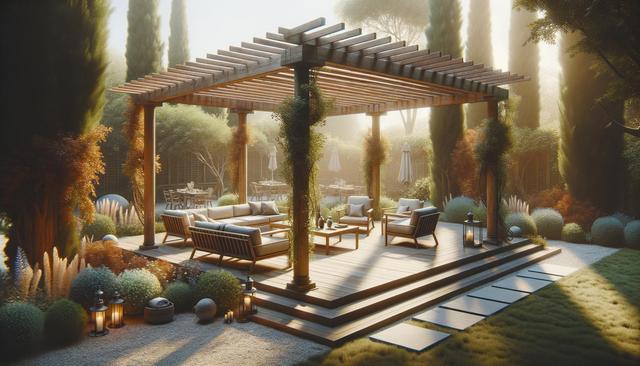Understanding the Purpose of Pergolas
Pergolas have become increasingly popular for homeowners looking to enhance their outdoor living experience. These open structures, typically made of wood, metal, or vinyl, provide partial shade and create a defined space for relaxation or entertaining guests. Pergolas Installation can transform a simple backyard into a functional extension of your home, offering both aesthetic and practical benefits. Their design allows for airflow and natural light, striking a perfect balance between indoor comfort and outdoor freedom.
Many homeowners appreciate pergolas for their versatility. They can be built over patios, decks, walkways, or standalone in gardens. Depending on your preferences, you can integrate climbing plants like wisteria or ivy for a more natural look. Pergolas also pair well with outdoor furniture, string lights, or curtains, allowing you to personalize your outdoor ambiance. This adaptability makes Pergolas Installation a valuable investment in any landscape design.
Key Considerations Before Installing a Pergola
Before beginning any Pergolas Installation project, it’s essential to consider several factors to ensure the structure fits your needs and complies with local regulations. First, determine the primary function of the pergola. Will it serve as a shaded seating area, a dining space, or a decorative garden feature? Knowing its purpose helps in selecting the appropriate size, location, and materials.
Additional considerations include:
- Local building codes and permits
- Sun orientation and shade patterns
- Material durability and maintenance
- Budget constraints
Choosing the right location is equally important. Ideally, the pergola should complement the existing layout of your outdoor space and not obstruct foot traffic or essential views. If privacy is a concern, consider installing side panels or trellises. These elements not only provide seclusion but also enhance the architectural interest of the structure.
Choosing Materials and Styles
The success of any Pergolas Installation lies in selecting materials and styles that align with your home’s architecture and climate conditions. Common materials include wood, aluminum, steel, and vinyl. Wooden pergolas, such as those made from cedar or redwood, offer a classic look but require regular maintenance to resist weathering. Metal options like aluminum or powder-coated steel provide a more modern appearance and are often low-maintenance.
Styles can range from traditional to contemporary. You might choose a flat-roof pergola for a minimalist look or go with an arched or gabled design for added visual appeal. It’s also possible to customize features such as:
- Decorative end cuts on beams
- Integrated lighting or fans
- Retractable canopies or louvered roofs
By understanding the pros and cons of each material and style, homeowners can make informed choices that lead to long-lasting satisfaction with their Pergolas Installation.
Installation Process and Professional Help
While some experienced DIYers may take on Pergolas Installation themselves, many homeowners opt for professional services to ensure structural integrity and code compliance. The installation process typically involves site preparation, setting foundation posts, assembling the frame, and adding finishing touches like paint or accessories.
Hiring a professional comes with several advantages:
- Accurate measurements and layout planning
- Proper anchoring and stability
- Adherence to safety standards
- Efficient project completion
Professional installers often provide warranties and ongoing support, which can be helpful if any issues arise after the project is completed. While the upfront cost may be higher, the long-term benefits of a correctly installed pergola often outweigh the initial investment.
Maintenance and Long-Term Care
After a successful Pergolas Installation, maintaining the structure ensures its longevity and continued aesthetic appeal. The level of maintenance required largely depends on the materials used. Wood pergolas need periodic sealing, staining, or painting to protect against pests and weather damage. Metal and vinyl alternatives are generally easier to care for, requiring only occasional cleaning with mild soap and water.
Regular inspections are recommended to identify and address issues like:
- Loose bolts or fasteners
- Wood rot or insect damage
- Rust or corrosion on metal parts
- Accumulated debris on the roof or beams
Seasonal upkeep, such as removing snow buildup or trimming back overgrown plants, also plays a role in preserving the structure. With proper care, a pergola can remain a functional and attractive feature of your outdoor space for many years.
Conclusion: Enhancing Outdoor Living with Pergolas Installation
Pergolas Installation offers homeowners a stylish and functional way to extend their living space outdoors. Whether you’re looking to create a cozy lounge area, a shaded dining spot, or a decorative garden feature, a pergola can be tailored to meet your needs. By considering factors like design, materials, and professional help, you can ensure a smooth installation process and enjoy the benefits of your new structure for years to come. With thoughtful planning and regular maintenance, your pergola can become a standout element of your home’s exterior design.







